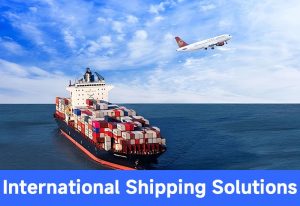International air transport refers to the use of aircraft as a means of transportation to transport a variety of goods between countries. One of the distinctive features of international air transport is its speed. Common jet transport speeds can reach 850-900 km/h, which makes international air transport much faster than other modes of transport. Moreover, the collection time of international air freight will not be as long as that of sea freight.
Advantages and Disadvantages of International Air Transport: Advantages: First, high-speed directness: Since there are fewer air routes restricted by natural geographical conditions, international air transport usually takes a shorter distance between two points, which has the advantage of high-speed directness.
Lower packaging requirements: Due to the stability of air navigation and the automatic landing system that reduces the replacement rate, international air transport has relatively low packaging requirements for goods.
Disadvantages High cost: Compared with other modes of transportation, the cost of international air transportation is higher, involving aviation fuel fees, airline service fees, and many other expenses.
Restricted cargo volume: Due to restrictions on aircraft and space, international air transports cannot carry large cargo or large quantities of cargo.
Dependence on weather conditions: International air transport is more sensitive to weather conditions, and severe weather conditions may cause flight delays or cancellations.
What types of goods are suitable for international air transport? The first category of high-value goods:
Jewelry: such as diamonds, gemstones, gold and silver jewelry, etc.
Luxury goods: such as high-end fashion, famous watches, brand-name bags, etc.
Electronic products: such as smartphones, tablets, high-end cameras, etc.The second category of fresh food: such as seafood, fruits, vegetables, etc. Transporting these goods quickly maintains their freshness and quality. Therefore, the best choice for these goods is international air transport<span style=”font-size: 16px;”>, which can maximize the protection of the value of the products. The third category of emergency spare parts: such as key components of industrial equipment, which are crucial to the continuity of production. In this case, you must choose the shortest transportation method to minimize the losses caused by production.
In which industries are international air transports used?
Express logistics industry:
The rapid development of e-commerce has made express logistics one of the most widely used areas for international air transport. Because small e-commerce parcels are relatively light, the cost of air transport is not too high. At the same time, freight efficiency greatly improves, better meeting the logistics requirements of e-commerce buyers and increasing the transaction rate of products.
International trade industry:
Medical and health industry:
Many industries widely use air transport in the fields of medicine and health. Air transport serves as the most effective mode of transportation for medical services that require quick delivery, such as emergency medical rescue and organ transplantation. In addition, air transport can also quickly deliver medicines, medical equipment, etc. to the destination to meet the medical needs of remote areas and and emergencies.
Passenger tourism industry:
As people’s living standards improve, more and more people choose to travel by plane for tourism and business trips. Air transportation can provide efficient and comfortable transportation services to meet people’s needs for time and comfort.
Defense and military industry:
In summary, international air transportation is very popular in many industries and plays an indispensable role. Its fast, safe, and efficient characteristics enable these industries to meet customer needs more effectively. However, to stand out in the market, they must also improve operational efficiency to maintain a competitive advantage in fierce competition.



